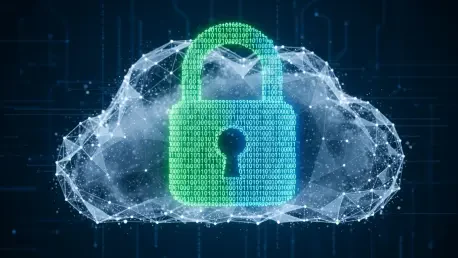In an era where cyber threats loom larger than ever, with a staggering increase in data breaches costing U.S. businesses billions annually, the urgency to secure cloud development has never been more critical. Imagine a financial institution racing to deploy a new app to stay competitive, only to discover post-launch that a vulnerability has exposed sensitive customer data. This scenario underscores a pressing challenge: balancing speed with security in software delivery. DevSecOps, a methodology integrating security into every phase of development, has emerged as a vital solution, especially for cloud environments. Startups in this space are stepping up, offering innovative tools and expertise to safeguard digital transformation across industries. This report delves into how these emerging players are reshaping secure cloud development in the U.S., addressing escalating threats, and driving operational resilience.
Overview of the DevSecOps Landscape in the U.S.
The DevSecOps ecosystem in the U.S. is witnessing rapid growth as industries recognize its indispensable role in secure cloud and application development. With businesses increasingly migrating to cloud platforms like AWS and Azure, the need to embed security practices early in the software lifecycle has become paramount. This methodology not only mitigates risks but also aligns with the accelerating pace of digital innovation, particularly in sectors like finance and healthcare, where data breaches can have catastrophic consequences.
Beyond its technical merits, DevSecOps represents a cultural shift, uniting development, operations, and security teams to combat sophisticated cyber threats. Startups are at the forefront of this movement, providing specialized solutions that larger enterprises often lack the agility to develop in-house. These innovators are driving secure digital transformation by offering tools for automation, continuous monitoring, and compliance with regulations such as GDPR, HIPAA, and SOC 2, which are critical for maintaining trust and operational integrity.
Technological advancements, including AI-driven analytics and automation tools, are further shaping this landscape. Cloud environments, while offering scalability, also introduce complexities like misconfigurations that demand robust security measures. As cyberattacks grow in complexity, the significance of DevSecOps in safeguarding critical infrastructure cannot be overstated, positioning it as a cornerstone of modern business strategy across diverse industries.
Emerging Trends and Market Dynamics in DevSecOps
Key Trends Shaping Secure Cloud Development
A notable trend in DevSecOps is the shift toward automation in security testing, with tools like static application security testing (SAST), software composition analysis (SCA), and dynamic application security testing (DAST) becoming integral to CI/CD pipelines. This automation enables teams to identify vulnerabilities early, reducing the risk of costly breaches during later stages of deployment. Such practices are essential as businesses strive to meet the dual demands of rapid software releases and stringent security standards.
Emerging technologies are also playing a transformative role, with AI-assisted vulnerability management and predictive analytics gaining traction for proactive risk mitigation. These tools analyze patterns to anticipate potential threats before they materialize, offering a forward-thinking approach to cybersecurity. Additionally, the widespread adoption of cloud environments has intensified the focus on securing hybrid and multi-cloud setups, where startups are carving out niches by providing tailored solutions to address specific pain points.
Market drivers, such as the increasing sophistication of cyberattacks and the growing reliance on cloud infrastructure, are fueling demand for DevSecOps expertise. Businesses now face pressure to deliver software faster without compromising on safety, creating opportunities for startups to fill expertise gaps. These emerging players are innovating with solutions that streamline secure development workflows, ensuring that speed and security are no longer mutually exclusive goals.
Market Growth and Future Projections
The DevSecOps market in the U.S. is expanding at a remarkable pace, with industry analysts noting a surge in adoption across sectors. While exact figures vary, consensus points to significant growth from this year through 2027, driven by the need for robust cloud security. Performance metrics highlight the impact, with case studies showing organizations reducing vulnerabilities by up to 40% and shortening release cycles through integrated security practices.
Looking ahead, the integration of continuous monitoring and advanced cloud security tools is expected to deepen, as companies prioritize real-time threat detection. Forecasts suggest that sector-specific solutions, particularly for healthcare and finance, will see heightened demand due to unique regulatory and risk profiles. These tailored approaches are likely to become a key differentiator for startups seeking to capture market share in a competitive landscape.
Growth potential also lies in the broader adoption of DevSecOps by small and medium-sized enterprises, which often lack the internal resources of larger corporations. As awareness of cybersecurity risks spreads, these businesses are turning to innovative providers for cost-effective, scalable solutions. This trend indicates a maturing market where security is increasingly seen as a foundational element of software development rather than an afterthought.
Challenges Facing DevSecOps Adoption in Cloud Environments
Implementing DevSecOps practices in cloud environments presents several hurdles, chief among them a persistent shortage of skilled professionals. Many organizations struggle to find talent capable of navigating the intersection of development, operations, and security, leading to delays in adoption. This gap often results in reliance on external partners, which, while effective, can introduce additional coordination challenges.
Technological barriers further complicate the landscape, with cloud misconfigurations posing significant risks if not addressed through robust policies and tools. The pressure to accelerate delivery schedules can also lead to insecure code, as teams prioritize speed over thorough testing. Overcoming these issues requires investment in automation and training to ensure that security remains a seamless part of the development process rather than a bottleneck.
Cultural resistance within organizations adds another layer of complexity, as many still view security as a separate function rather than an integrated priority. Breaking down silos between teams demands a shift in mindset, often necessitating leadership buy-in and strategic change management. Partnerships with startups offer a pathway forward, providing not only technical solutions but also guidance on fostering collaboration and building a security-first culture to enhance overall resilience.
Regulatory and Compliance Landscape Impacting DevSecOps
The regulatory framework surrounding DevSecOps in the U.S. is shaped by critical standards such as GDPR, HIPAA, and SOC 2, which impose strict requirements on data protection and privacy. These regulations are particularly impactful in industries handling sensitive information, where non-compliance can result in severe penalties and reputational damage. As a result, organizations are compelled to prioritize security measures that align with legal mandates.
Compliance automation has emerged as a vital tool in navigating this complex environment, enabling businesses to meet stringent requirements efficiently. Startups are instrumental in this area, offering solutions that integrate governance and security policies into development workflows. Such innovations help ensure that cloud-based applications remain compliant without sacrificing the agility needed for competitive delivery timelines.
Regulatory changes continue to influence cloud development practices, requiring continuous monitoring and adaptation to stay ahead of evolving standards. Secure CI/CD pipelines and cloud security configurations are essential for maintaining alignment with these mandates. By leveraging specialized services, organizations can address compliance challenges proactively, reinforcing trust with stakeholders while minimizing exposure to legal and operational risks.
Future Outlook for DevSecOps in U.S. Cloud Development
The trajectory of DevSecOps in the U.S. points toward significant advancements, with AI, predictive analytics, and enhanced automation poised to redefine security practices. These technologies promise to improve threat detection and response capabilities, allowing businesses to stay ahead of increasingly sophisticated cyber risks. As innovation accelerates, the industry is likely to see a wave of new tools designed to address emerging vulnerabilities.
Market disruptors, such as novel cyber threats or groundbreaking security solutions, could reshape the competitive landscape in unexpected ways. Consumer and business preferences are also evolving, with a growing emphasis on secure, fast, and compliant software delivery in a digital-first economy. This shift underscores the need for DevSecOps providers to remain agile, adapting to changing demands while maintaining a focus on core security principles.
Sector-specific solutions and the expansion of cloud security services represent key growth areas for the future. Global economic conditions and regulatory shifts may further influence the pace of adoption and innovation, presenting both challenges and opportunities. As the industry matures, the ability to anticipate and respond to these broader dynamics will be critical for startups aiming to lead in securing U.S. cloud development.
Final Reflections and Strategic Pathways
Reflecting on the insights gathered, it is evident that DevSecOps startups play a pivotal role in fortifying U.S. cloud development against escalating cyber threats. Their contributions span from reducing vulnerabilities to ensuring compliance, fundamentally enhancing operational efficiency across industries. The measurable outcomes, like faster release cycles and stronger security postures, underscore their transformative impact.
Moving forward, businesses should consider strategic partnerships with these startups to access tailored solutions that address specific security and compliance needs. Investing in automation tools and developer training emerges as a practical step to bridge internal capability gaps. Additionally, exploring AI-driven security innovations and sector-specific services could position companies to tackle future challenges effectively, ensuring they remain competitive in a rapidly evolving digital landscape.








